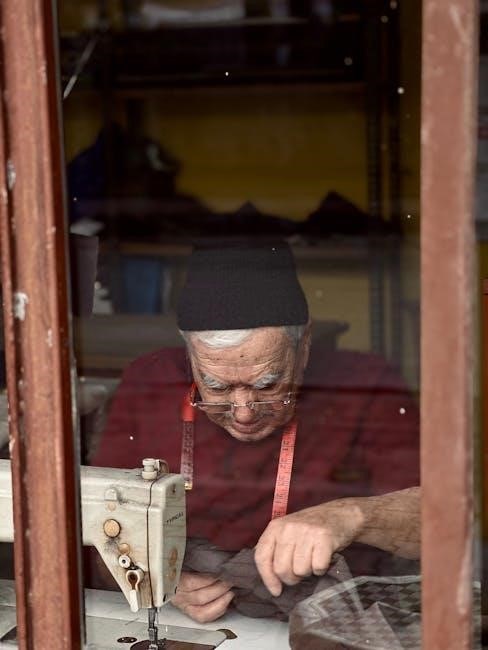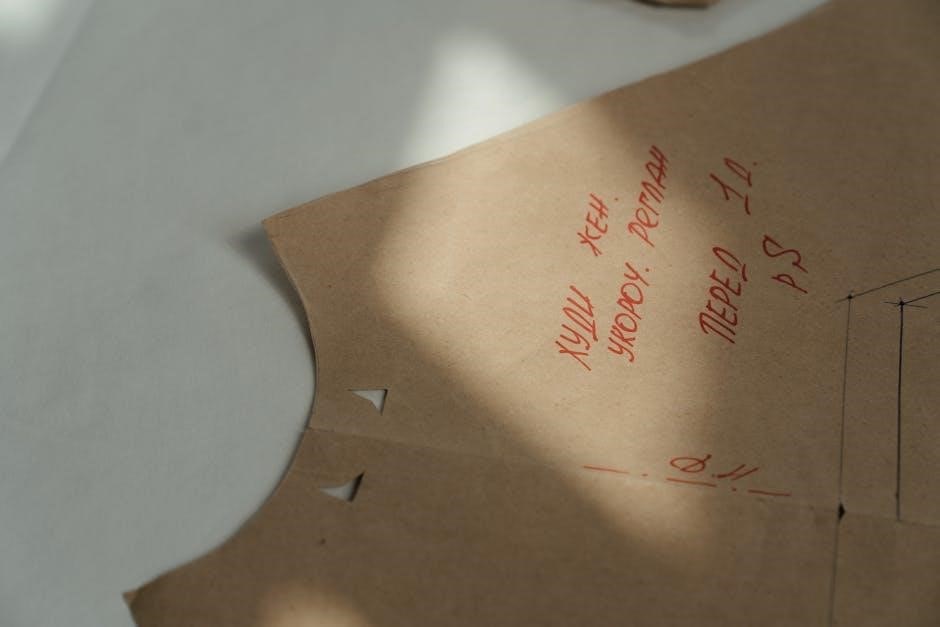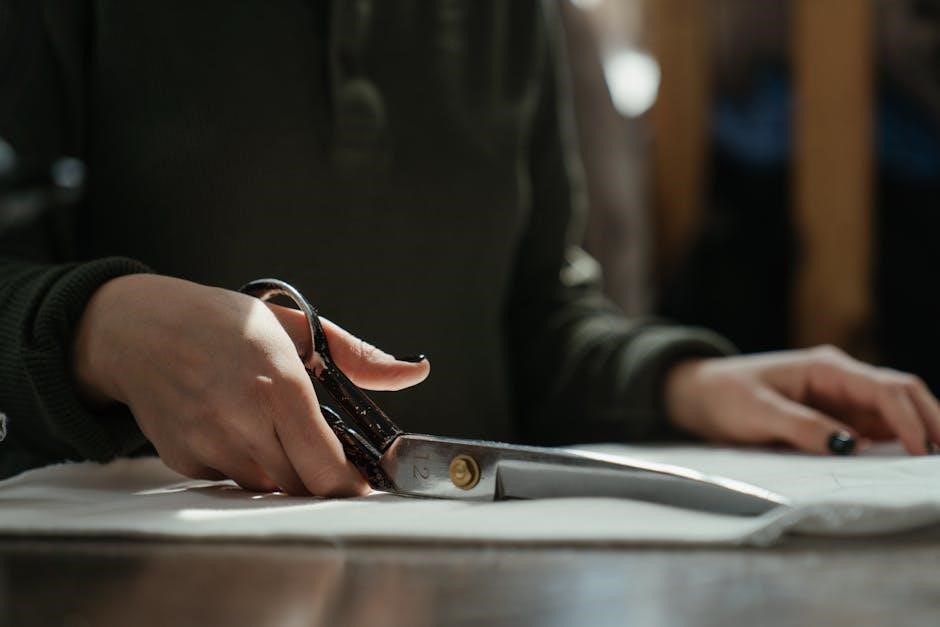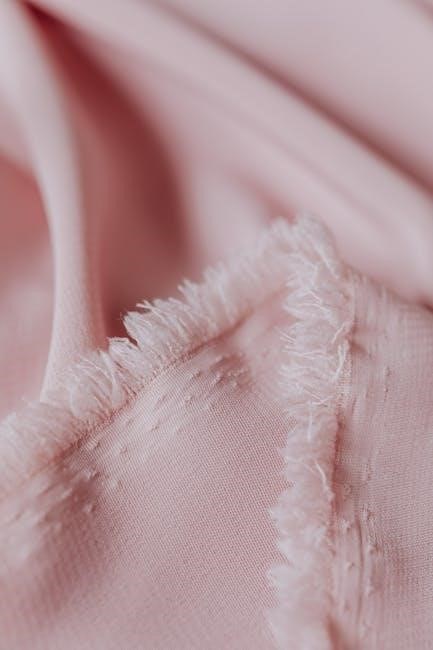a guide to fashion sewing
A Guide to Fashion Sewing provides comprehensive resource for sewers, covering various styles and techniques, with proven industry methods and applications, using
sewing guides
and pattern instructions effectively always online.
Overview of Fashion Sewing
A Guide to Fashion Sewing is a comprehensive resource that covers the fundamentals of fashion sewing, including various styles and techniques. The guide provides readers with a thorough understanding of the subject, covering topics such as assembling and constructing designs. With proven industry methods and over 100 sewing applications, readers can learn how to create a wide range of garments and accessories. The guide is suitable for both beginning and advanced sewers, making it an ideal resource for anyone looking to improve their fashion sewing skills. By following the guide, readers can gain the confidence and skills needed to create professional-looking garments and accessories. The guide is available in various editions, including the 5th and 7th editions, each providing a comprehensive overview of fashion sewing. With its detailed instructions and examples, A Guide to Fashion Sewing is an essential resource for anyone interested in fashion sewing. The guide is widely available online and can be purchased from various retailers. Overall, A Guide to Fashion Sewing is a valuable resource that can help readers improve their fashion sewing skills and create beautiful garments and accessories.

Understanding Sewing Patterns
Learning to read patterns is essential, using
instructions
and guides to assemble garments effectively always.
Reading and Interpreting Patterns
Reading and interpreting patterns is a crucial skill for fashion sewers, as it allows them to bring their designs to life. According to A Guide to Fashion Sewing, patterns provide a map for constructing garments, and understanding how to read them is essential. The guide provides detailed instructions on how to interpret patterns, including how to identify different components, such as grain lines and seam allowances. By learning how to read patterns, sewers can ensure that their garments are constructed correctly and fit well. The guide also covers different types of patterns, including commercial patterns and indie patterns, and provides tips for working with each type. With practice and patience, sewers can become proficient in reading and interpreting patterns, and can create beautiful and professional-looking garments. The guide is a valuable resource for sewers of all levels, from beginners to advanced sewers, and provides a comprehensive overview of pattern reading and interpretation.

Choosing the Right Fabric
Fashion sewers select fabrics based on texture, drape, and fiber content using
online resources
and guides always effectively.
Understanding Fabric Types and Textures
Fashion sewing involves working with various fabric types and textures, including woven and knit fabrics, which have distinct characteristics and uses.
Woven fabrics, such as cotton and linen, are popular for their durability and versatility, while knit fabrics, like jersey and interlock, offer stretch and comfort.
Understanding the differences between these fabrics is crucial for selecting the right material for a project, as it affects the garment’s appearance, drape, and wearability.
Additionally, fabric textures, such as smooth, rough, or soft, can impact the overall look and feel of a garment, making it essential to consider these factors when choosing fabrics for fashion sewing projects, using online resources and guides for reference.
By grasping the fundamentals of fabric types and textures, sewers can make informed decisions and create garments that meet their desired aesthetic and functional requirements, with attention to detail and a focus on quality.
This knowledge is essential for achieving professional-looking results and ensuring a successful fashion sewing experience, with a focus on creating beautiful and functional garments.

Essential Sewing Tools and Equipment
Sewing machines, scissors, and needles are necessary tools for fashion sewing, providing efficiency and precision always online with guides.
Sewing Machines and Notions
Sewing machines are a crucial part of fashion sewing, providing efficiency and precision in constructing garments; There are various types of sewing machines available, including mechanical, computerized, and overlock machines. Notions, such as threads, zippers, and buttons, are also essential components of fashion sewing. A guide to fashion sewing should include information on how to choose the right sewing machine and notions for a particular project. Additionally, it should provide tips on how to use and maintain these tools to achieve professional-looking results. With the right sewing machine and notions, sewers can create a wide range of garments, from casual wear to formal attire. By understanding the different types of sewing machines and notions available, sewers can make informed decisions about which tools to use for their projects. This knowledge is essential for achieving success in fashion sewing and creating high-quality garments. Sewing machines and notions are fundamental to the fashion sewing process.

Basic Sewing Techniques
Learning basic sewing techniques is essential for fashion sewing, including stitching, gathering, and finishing seams with
precision and accuracy always
.
Seaming and Hemming
Seaming and hemming are fundamental techniques in fashion sewing, requiring attention to detail and precision. A guide to fashion sewing provides comprehensive instructions on how to create professional-looking seams and hems, including tips on thread selection, stitch length, and finishing methods. By following these guidelines, sewers can achieve high-quality results, ensuring their garments are durable and visually appealing. The process of seaming involves joining two or more pieces of fabric together, while hemming involves folding and sewing the raw edge of fabric to prevent fraying. Both techniques are crucial in garment construction, and mastering them is essential for any sewer. With practice and patience, sewers can develop the skills needed to create beautiful, professional-looking seams and hems, taking their fashion sewing projects to the next level. Using online resources and sewing guides can also help improve seaming and hemming techniques, providing access to a wealth of information and expert advice.